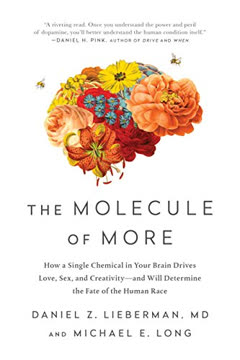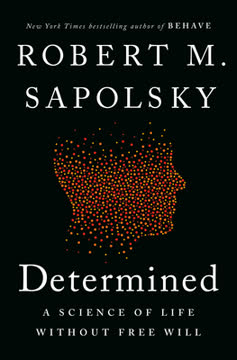मुख्य निष्कर्ष
1. व्यवहार जीन, पर्यावरण और संस्कृति के जटिल अंतःक्रियाओं से आकारित होता है
जीन स्वतंत्र एजेंट नहीं होते जो जैविक घटनाओं का आदेश देते हैं।
जीन का प्रभाव जटिल है। जबकि जीन व्यवहार में एक भूमिका निभाते हैं, उनके प्रभाव अक्सर छोटे होते हैं और पर्यावरणीय कारकों पर अत्यधिक निर्भर करते हैं। जीन-पर्यावरण अंतःक्रियाएँ यह दर्शाती हैं कि एक ही जीन विभिन्न संदर्भों में अलग-अलग प्रभाव डाल सकता है। उदाहरण के लिए:
- MAOA जीन, जिसे कभी "योद्धा जीन" कहा गया था, केवल उन व्यक्तियों में आक्रामकता बढ़ाता है जिन्होंने बचपन में दुर्व्यवहार का अनुभव किया।
- DRD4 जीन, जो नवीनता की खोज से जुड़ा है, सांस्कृतिक संदर्भ के आधार पर विभिन्न प्रभाव डालता है।
सांस्कृतिक कारक महत्वपूर्ण हैं। संस्कृति यह निर्धारित करती है कि जीन कैसे व्यक्त होते हैं और पर्यावरणीय कारक व्यवहार को कैसे प्रभावित करते हैं। कुछ प्रमुख सांस्कृतिक प्रभावों में शामिल हैं:
- सामूहिकतावादी बनाम व्यक्तिगततावादी दृष्टिकोण
- सामाजिक-आर्थिक असमानता
- धार्मिक और वैचारिक विश्वास
- संघर्ष या सहयोग के ऐतिहासिक अनुभव
2. मस्तिष्क की संरचना और कार्य जीवन भर विकसित होते हैं, जो व्यवहार को प्रभावित करते हैं
महत्वपूर्ण रूप से, मस्तिष्क का अंतिम क्षेत्र जो पूरी तरह से परिपक्व होता है (साइनैप्स की संख्या, मायलीनेशन और चयापचय के संदर्भ में) वह फ्रंटल कॉर्टेक्स है, जो मध्य बीस के दशक तक पूरी तरह से सक्रिय नहीं होता।
न्यूरोप्लास्टिसिटी निरंतर है। मस्तिष्क जीवन भर अनुभवों और पर्यावरणीय इनपुट के जवाब में बदलता और अनुकूलित होता रहता है। न्यूरोप्लास्टिसिटी के प्रमुख पहलुओं में शामिल हैं:
- साइनैप्टिक प्रूनिंग और सुदृढ़ीकरण
- कुछ मस्तिष्क क्षेत्रों में नए न्यूरॉन्स का निर्माण (न्यूरोजेनेसिस)
- सिग्नल ट्रांसमिशन की गति को प्रभावित करने वाली मायलीनेशन में परिवर्तन
महत्वपूर्ण अवधियाँ मौजूद हैं। कुछ विकासात्मक खिड़कियाँ मस्तिष्क की संरचना और कार्य को आकार देने के लिए विशेष रूप से महत्वपूर्ण होती हैं:
- प्रारंभिक बचपन: तेजी से साइनैप्स का निर्माण और प्रूनिंग
- किशोरावस्था: प्रीफ्रंटल कॉर्टेक्स और भावनात्मक नियंत्रण प्रणालियों का परिपक्व होना
- वयस्कता: निरंतर प्लास्टिसिटी, लेकिन पहले की अवधियों की तुलना में धीमी गति से
3. हार्मोन सामाजिक व्यवहार और आक्रामकता को आकार देने में एक सूक्ष्म भूमिका निभाते हैं
टेस्टोस्टेरोन हमें स्थिति प्राप्त करने और बनाए रखने के लिए आवश्यक कदम उठाने के लिए अधिक इच्छुक बनाता है।
संदर्भ महत्वपूर्ण है। टेस्टोस्टेरोन और ऑक्सीटोसिन जैसे हार्मोन का व्यवहार पर सरल, सार्वभौमिक प्रभाव नहीं होता। उनका प्रभाव सामाजिक संदर्भ और व्यक्तिगत भिन्नताओं पर निर्भर करता है:
- टेस्टोस्टेरोन स्थिति प्राप्त करने के लिए आवश्यक होने पर प्रोसोशल व्यवहार को बढ़ा सकता है।
- ऑक्सीटोसिन समूह में बंधन को बढ़ाता है लेकिन बाहरी समूहों के प्रति शत्रुता बढ़ा सकता है।
हार्मोन-व्यवहार संबंध द्विदिशात्मक होते हैं। व्यवहार हार्मोन के स्तर को प्रभावित कर सकता है जैसे हार्मोन व्यवहार को प्रभावित करते हैं:
- प्रतियोगिता जीतने से टेस्टोस्टेरोन के स्तर में वृद्धि होती है।
- सामाजिक बंधन से ऑक्सीटोसिन के स्तर में वृद्धि होती है।
4. बचपन के अनुभव वयस्क व्यवहार और मस्तिष्क के कार्य पर स्थायी प्रभाव डालते हैं
बचपन में कठिनाइयाँ वयस्कों में (क) अवसाद, चिंता, और/या पदार्थ दुरुपयोग; (ख) संज्ञानात्मक क्षमताओं में कमी, विशेष रूप से फ्रंटोकॉर्टिकल कार्य से संबंधित; (ग) आवेग नियंत्रण और भावना विनियमन में कमी; (घ) एंटीसोशल व्यवहार, जिसमें हिंसा शामिल है; और (ङ) ऐसे रिश्ते जो बचपन की कठिनाइयों को दोहराते हैं (जैसे, एक दुर्व्यवहार करने वाले साथी के साथ रहना) की संभावना बढ़ा देती हैं।
प्रारंभिक तनाव के दीर्घकालिक प्रभाव होते हैं। बचपन में कठिनाइयाँ मस्तिष्क की संरचना और कार्य में स्थायी परिवर्तन ला सकती हैं:
- तनाव हार्मोन हिप्पोकैम्पस और प्रीफ्रंटल कॉर्टेक्स के विकास को प्रभावित करते हैं।
- अमिगडाला में भावनात्मक प्रसंस्करण में परिवर्तन।
सकारात्मक अनुभव भी महत्वपूर्ण हैं। बचपन में सहायक, पोषणकारी वातावरण स्वस्थ मस्तिष्क विकास और लचीलापन को बढ़ावा देते हैं:
- सुरक्षित संबंध बेहतर भावनात्मक नियंत्रण को बढ़ावा देते हैं।
- समृद्ध, उत्तेजक वातावरण संज्ञानात्मक विकास को बढ़ाते हैं।
5. किशोरावस्था मस्तिष्क विकास और व्यवहार पैटर्न के लिए एक महत्वपूर्ण अवधि है
यदि किशोरावस्था में लिम्बिक, स्वायत्त, और अंतःस्रावी प्रणालियाँ पूरी ताकत से काम कर रही हैं जबकि फ्रंटल कॉर्टेक्स अभी भी असेंबली निर्देशों को समझने में लगा है, तो हमने यह समझा दिया है कि किशोर कितने निराशाजनक, महान, मूर्ख, आवेगी, प्रेरणादायक, विनाशकारी, आत्म-विनाशकारी, निस्वार्थ, स्वार्थी, असंभव, और विश्व को बदलने वाले होते हैं।
प्रीफ्रंटल कॉर्टेक्स का परिपक्व होना महत्वपूर्ण है। अन्य मस्तिष्क क्षेत्रों की तुलना में प्रीफ्रंटल कॉर्टेक्स का देर से विकास कई किशोर व्यवहारों को समझाता है:
- जोखिम लेने और संवेदनाओं की खोज में वृद्धि।
- भावनात्मक प्रतिक्रियाओं में वृद्धि।
- आवेग नियंत्रण और दीर्घकालिक योजना बनाने में कठिनाई।
साथी प्रभाव चरम पर होता है। किशोर विशेष रूप से सामाजिक प्रभाव के प्रति संवेदनशील होते हैं:
- सामाजिक अस्वीकृति के प्रति संवेदनशीलता में वृद्धि।
- साथियों की स्वीकृति के लिए मजबूत प्रेरणा।
- साथियों की उपस्थिति में अधिक जोखिम लेना।
6. सांस्कृतिक भिन्नताएँ व्यवहार, संज्ञान और सामाजिक मानदंडों पर महत्वपूर्ण प्रभाव डालती हैं
संस्कृति का प्रभाव विशाल है।
धारणा और संज्ञान भिन्न होते हैं। विभिन्न संस्कृतियाँ यह निर्धारित करती हैं कि लोग जानकारी को कैसे संसाधित करते हैं और दुनिया को कैसे देखते हैं:
- व्यक्तिगततावादी संस्कृतियाँ दृश्य दृश्यों में केंद्रीय वस्तुओं पर ध्यान केंद्रित करती हैं।
- सामूहिकतावादी संस्कृतियाँ संदर्भ संबंधी जानकारी पर अधिक ध्यान देती हैं।
सामाजिक व्यवहार सांस्कृतिक रूप से प्रभावित होता है। सांस्कृतिक मानदंड अंतरव्यक्तिगत इंटरैक्शन और नैतिक निर्णयों को आकार देते हैं:
- निष्पक्षता और न्याय की अवधारणाएँ संस्कृतियों में भिन्न होती हैं।
- भावनात्मक अभिव्यक्ति और विनियमन में भिन्नता होती है।
सांस्कृतिक विकास निरंतर है। संस्कृतियाँ लगातार बदलती और अनुकूलित होती हैं:
- वैश्वीकरण सांस्कृतिक मिश्रण और हाइब्रिडाइजेशन की ओर ले जाता है।
- तकनीकी परिवर्तन नए सांस्कृतिक प्रथाओं और मानदंडों का निर्माण करते हैं।
7. विकास ने मानव व्यवहार को आकार दिया है, लेकिन हम अक्सर विकासात्मक भविष्यवाणियों से भटकते हैं
हम स्वभाव से गहराई से भ्रमित हैं—हल्के बहुविवाही, कहीं बीच में तैरते हुए।
मानव यौन प्रणालियाँ लचीली हैं। कई प्रजातियों के स्थिर यौन पैटर्न के विपरीत, मानवों में मोनोगैमस और बहुविवाही प्रवृत्तियों का मिश्रण होता है:
- अधिकांश संस्कृतियाँ बहुविवाह की अनुमति देती हैं, लेकिन अधिकांश व्यक्ति सामाजिक रूप से मोनोगैमस होते हैं।
- मानवों में यौन द्विरूपता जोड़ी-बंधित और प्रतियोगिता प्रजातियों के बीच मध्यवर्ती होती है।
सहयोग रिश्तेदारों से परे बढ़ता है। मानवों में गैर-रिश्तेदारों के साथ सहयोग के अभूतपूर्व स्तर होते हैं:
- बड़े पैमाने पर समाजों को अजनबियों के बीच सहयोग की आवश्यकता होती है।
- सांस्कृतिक संस्थाएँ तत्काल रिश्तेदार समूहों से परे सहयोग को बढ़ावा देती हैं।
8. सहयोग और परोपकार व्यक्तिगत, रिश्तेदार, और समूह चयन के संयोजन से उभरते हैं
जानवर प्रजातियों के भले के लिए व्यवहार नहीं करते। वे अपने जीन की अगली पीढ़ी में अधिकतम संख्या में प्रतियों को पहुँचाने के लिए व्यवहार करते हैं।
चयन के कई स्तर काम करते हैं। मानव व्यवहार को आकार देने वाले कारक हैं:
- व्यक्तिगत चयन: ऐसे गुण जो व्यक्तिगत अस्तित्व और प्रजनन को लाभ पहुँचाते हैं।
- रिश्तेदार चयन: उन रिश्तेदारों की मदद करना जो जीन साझा करते हैं।
- पारस्परिक परोपकार: गैर-रिश्तेदारों के साथ सहयोग करना आपसी लाभ के लिए।
- समूह चयन: ऐसे गुण जो समूह को लाभ पहुँचाते हैं, भले ही व्यक्तिगत लागत पर।
सांस्कृतिक प्रथाएँ चयन को प्रभावित करती हैं। मानव संस्कृति नए चयन दबाव उत्पन्न करती है:
- सामाजिक मानदंड समूह-लाभकारी व्यवहारों को बढ़ावा दे सकते हैं।
- धर्म और कानून जैसी संस्थाएँ सहयोग को लागू करती हैं।
9. न्यूरोसाइंस हमारे सर्वोत्तम और सबसे खराब व्यवहारों की जैविक नींव को प्रकट करती है
मस्तिष्क वह स्थान नहीं है जहाँ व्यवहार "शुरू" होता है। यह केवल अंतिम सामान्य मार्ग है जिसके द्वारा आने वाले अध्यायों में सभी कारक एकत्रित होते हैं और व्यवहार का निर्माण करते हैं।
नैतिकता और सहानुभूति के लिए न्यूरल सर्किट। प्रोसोशल व्यवहार में शामिल प्रमुख मस्तिष्क क्षेत्र:
- प्रीफ्रंटल कॉर्टेक्स: कार्यकारी नियंत्रण और नैतिक तर्क।
- एंटीरियर सिंगुलेट कॉर्टेक्स: सहानुभूति और संघर्ष की निगरानी।
- अमिगडाला: भावनात्मक प्रसंस्करण और भय प्रतिक्रिया।
आक्रामकता और हिंसा के जैविक आधार। न्यूरल और हार्मोनल कारक योगदान करते हैं:
- प्रीफ्रंटल नियंत्रण और लिम्बिक भावनात्मक प्रतिक्रियाओं के बीच असंतुलन।
- सेरोटोनिन और डोपामाइन सिग्नलिंग में परिवर्तन।
- प्रारंभिक जीवन का तनाव मस्तिष्क विकास को प्रभावित करता है।
प्लास्टिसिटी परिवर्तन की अनुमति देती है। व्यवहार की न्यूरोबायोलॉजी को समझने से हस्तक्षेप के लिए संभावनाएँ खुलती हैं:
- प्रीफ्रंटल कार्य को बढ़ाने या अमिगडाला की प्रतिक्रियाशीलता को कम करने के लिए लक्षित उपचार।
- स्वस्थ मस्तिष्क विकास को बढ़ावा देने के लिए सामाजिक और पर्यावरणीय हस्तक्षेप।
अंतिम अपडेट:
FAQ
What's Behave: The Biology of Humans at Our Best and Worst about?
- Exploration of Human Behavior: The book examines the biological underpinnings of human behavior, focusing on aggression, violence, and prosocial actions. It explores how factors like neurobiology and hormones influence our actions.
- Interdisciplinary Approach: Robert M. Sapolsky integrates insights from neurobiology, psychology, and sociology to provide a comprehensive understanding of human behavior. He argues that behavior requires a multifaceted perspective.
- Contextual Understanding: Sapolsky emphasizes that context is crucial in determining whether a behavior is seen as good or bad, highlighting how the same action can be interpreted differently based on circumstances.
Why should I read Behave: The Biology of Humans at Our Best and Worst?
- Insightful Analysis: Sapolsky offers a deep dive into the complexities of human behavior, making it valuable for those interested in psychology, biology, or social sciences. His engaging style makes complex concepts accessible.
- Relevance to Current Issues: The book addresses societal issues like violence, morality, and empathy, providing a scientific framework to understand these phenomena, making it timely in today's context.
- Encourages Critical Thinking: By challenging simplistic views of behavior, Behave encourages readers to think critically about human motivations, promoting a nuanced understanding of morality and ethics.
What are the key takeaways of Behave: The Biology of Humans at Our Best and Worst?
- Biology and Behavior Interconnected: Biological factors, including hormones and brain structure, significantly influence behavior. Sapolsky argues against distinguishing between biological, psychological, or cultural aspects of behavior.
- Context Matters: The interpretation of behaviors as good or bad is heavily dependent on context. Sapolsky notes that we often hate the wrong kind of violence but love it in the right context.
- Complexity of Human Nature: Human behavior is influenced by genetics, environment, and social learning, requiring a holistic view rather than isolated components.
What are the best quotes from Behave: The Biology of Humans at Our Best and Worst and what do they mean?
- “The opposite of love is not hate; its opposite is indifference.” This highlights the importance of empathy and engagement, suggesting that apathy can be more damaging than active dislike.
- “We are always shadowed by the threat of other humans harming us.” Reflects the inherent risks in human interactions and the potential for violence, underscoring the need to understand aggression's roots.
- “The more we consume, the hungrier we get.” Addresses the paradox of modern life, where increased access to pleasure can lead to greater dissatisfaction, suggesting insatiable desires can have negative consequences.
How does Robert M. Sapolsky explain aggression in Behave?
- Biological Basis of Aggression: Hormones like testosterone and neurobiological factors contribute to aggressive behavior. Testosterone amplifies preexisting tendencies rather than directly causing aggression.
- Contextual Triggers: Aggression often responds to specific social contexts or challenges, with testosterone levels rising in response to social challenges, increasing aggressive behavior likelihood.
- Learning and Experience: Aggression is shaped by social learning and past experiences, with learned behaviors playing a significant role in future aggression.
What role do hormones play in human behavior according to Behave?
- Influence of Testosterone: Testosterone amplifies existing tendencies rather than causing aggression outright, with its actions being contingent and amplifying.
- Oxytocin and Social Bonds: Oxytocin fosters social bonding and prosocial behavior but also promotes in-group favoritism, making us more prosocial to Us and worse to everyone else.
- Stress Hormones: Chronic stress hormones impair cognitive function and emotional regulation, leading to impulsive and aggressive behaviors, affecting decision-making and empathy.
How does Behave address the concept of free will?
- Skepticism of Free Will: Sapolsky doubts traditional free will, suggesting behaviors are influenced by biological and environmental factors beyond individual control, leading to more compassionate views.
- Complex Interplay of Factors: Behavior results from genetics, hormones, and social context, making it difficult to attribute actions solely to free will.
- Implications for Justice: This perspective challenges moral culpability, suggesting understanding behavior's biological basis can lead to more effective interventions than punitive measures.
What does Robert M. Sapolsky say about the effects of childhood adversity in Behave?
- Long-term Consequences: Childhood adversity links to negative outcomes in adulthood, including mental health issues and antisocial behavior, with multiple adversities dimming chances of a happy adulthood.
- Biological Mechanisms: Early-life stressors elevate glucocorticoid levels, impairing brain development and function, increasing anxiety, depression, and aggression risks.
- Resilience Factors: Despite risks, many individuals with childhood adversity do not develop significant issues, with supportive relationships mitigating adversity effects.
How does Behave explain the relationship between empathy and behavior?
- Empathy as a Complex Emotion: Empathy involves emotional and cognitive components, allowing understanding and sharing of others' feelings, leading to prosocial behavior but can be overwhelming.
- Neurobiological Underpinnings: Brain regions like the anterior cingulate and insula activate when witnessing others in pain, with regulation of adverse empathic emotions leading to prosocial actions.
- Adolescent Empathy: Adolescents experience heightened empathy, leading to positive and negative outcomes, with empathic hyperarousal sometimes hindering effective action.
How does Behave address the impact of culture on behavior?
- Cultural Influences on Behavior: Cultural norms and values shape behaviors, including aggression and prosocial actions, with culture shaping how and where we look at the world.
- Variability Across Cultures: Behaviors acceptable in one culture may differ in another, with moral judgments differing cross-culturally, crucial for addressing global issues.
- Cultural Context in Empathy: Cultural background affects empathic responses and social interactions, with oxytocin's actions depending dramatically on context, influencing how we relate to others.
How does Behave connect behavior to evolutionary biology?
- Evolutionary Perspective on Behavior: Behaviors are understood through evolution, with traits enhancing survival and reproduction favored over time.
- Kin Selection and Altruism: Behaviors promoting relatives' survival can be advantageous for passing on shared genes, illustrating altruism's evolutionary basis.
- Cultural Evolution: Biological traits evolve, and cultural traits change over time, influenced by environmental pressures and social dynamics.
How does Behave relate to current societal issues?
- Understanding Violence and Aggression: Insights into biological and environmental factors contributing to violence and aggression, essential for reducing violence and promoting peace.
- Mental Health Implications: Understanding biological basis of mental health issues, advocating for compassionate treatment approaches, informing policies and practices.
- Promoting Empathy and Cooperation: Emphasizes fostering empathy and cooperation in addressing societal challenges, understanding biological foundations to create a compassionate society.
समीक्षाएं
व्यवहार मानव व्यवहार का अध्ययन जैविक, विकासात्मक और सांस्कृतिक दृष्टिकोण से करता है। सापोल्स्की तंत्रिका विज्ञान, हार्मोनों, आनुवंशिकी और पर्यावरण पर किए गए शोध को एकत्रित करते हैं ताकि यह समझा सकें कि मनुष्य ऐसा क्यों व्यवहार करते हैं। इस पुस्तक की व्यापकता, आकर्षक लेखन शैली और सापोल्स्की की हास्य भावना के लिए प्रशंसा की गई है। जबकि कुछ समीक्षकों ने इसे घना और कभी-कभी पक्षपाती पाया, कई इसे मानव स्वभाव के सरल दृष्टिकोणों को चुनौती देने वाला एक क्रांतिकारी काम मानते हैं। सापोल्स्की व्यवहार की जटिलता पर जोर देते हैं, एकल-कारण व्याख्याओं के खिलाफ तर्क करते हैं और मानव क्रियाओं को आकार देने में जैविकी और पर्यावरण के बीच के अंतःक्रिया को उजागर करते हैं।
Similar Books




















